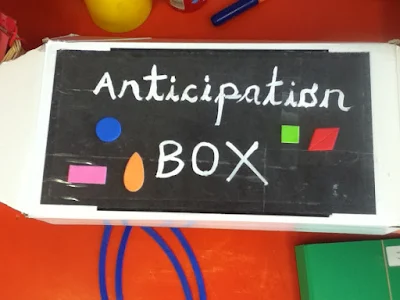Whilst teaching this was hugely popular and a great activity to help your child learn in a fun way.
In the morning the children in my class would put a secret object inside the anticipation box and it would stay closed for the rest of the day until home time. We would anticipate all day what could be inside! Not only do the children really enjoy this activity and look forward to the end of the day when we finally open up the box and see what is inside - it is also a brilliant way to help your child with their speaking and thinking skills, as well as exposing them to mathematical language and giving them an opportunity to practise their phonic skills.
Anticipation box-learn in a fun way! Activity to aid phonics and maths
This would work with your child at home in a similar way, ask them to choose a toy and hide it behind their back or in a box. They could even make their own anticipation box, and fill it with lots of toys, but choose only one as their 'main' toy.
The first few times of using the anticipation box I would choose an object and describe it myself to the child/children and see whether they can guess what it is. I would describe using different senses such as feels like, looks like, smells like etc.... Starts with the letter /b/ etc...... This helps model to the children exactly how they can explore an object themselves.
Once they are used to this, Ask your child to describe a toy they have put In the box to you in as much detail as possible until you are able to guess what the toy is, or pick it out from the rest. Here is a list of prompt questions:
Is your toy big/small, tall/long/short
How does your toy feel - soft, hard, heavy, light, rough, smooth, furry etc
What shapes can you see - discuss 2d and 3d shapes
Are there any patterns on your toy?
What colours are on your toy?
What does your toy begin with?
Can you 'sound out' the name of your toy? ( eg, d-o-ll, c-ar, b-oo-k)
Is your toy big/small, tall/long/short
How does your toy feel - soft, hard, heavy, light, rough, smooth, furry etc
What shapes can you see - discuss 2d and 3d shapes
Are there any patterns on your toy?
What colours are on your toy?
What does your toy begin with?
Can you 'sound out' the name of your toy? ( eg, d-o-ll, c-ar, b-oo-k)
How many (wheels for example)
Have fun! If children enjoy what they do and see this as a game they will learn so much more!
Emotional Development provision area
Cafe Role play area and play demonstration - plus how to make the food
Developing language in the Early Years
 Click here for all posts on Learning Through Play
Click here for all posts on Learning Through Play
Emotional Development provision area
Cafe Role play area and play demonstration - plus how to make the food
Developing language in the Early Years
 Click here for all posts on Learning Through Play
Click here for all posts on Learning Through Play 
